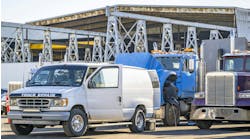There is a lot of talk about the need for continuous improvement if a business is going to remain viable. I think many people believe that involves making sweeping changes in their organizations.
There are times when sweeping changes are called for, but to me, continuous improvement can be about making incremental changes as needed. I see it more as tweaking things to make them better rather than wholesale shifts in the way you do business.
One good thing about viewing continuous improvement as a series of small adjustments is that it is easier to get engagement from your staff. Not everyone who works for you has the ability to see how to revamp the entire operation, but nearly everyone has a suggestion or two on how to make their job or department a little better.
See also: What's your definition of useful data?
Of course, it is incumbent on management to put in place a process for employees to use to submit their ideas on what changes they believe will improve operations. And employees need to feel like management is taking those suggestions seriously. This does not mean every suggestion needs to be implemented, but employees should be told why a suggestion cannot be implemented, and they should be encouraged to continue to offer suggestions for how to make the business better.
Not all suggestions will directly result in savings to your bottom line; some may be in the area of improving safety, making your company easier to do business with, or removing a stumbling block that has interfered with productivity.
Another benefit of making small changes is that they are less likely to be met with resistance. Most people are not comfortable with change, and the bigger the change, the greater the discomfort. Smaller ongoing changes are less intimidating and easier for people to adjust to.
While there might be a cost associated with implementing a new change, chances are if it is small, the cost will be low. The cost needs to be factored into the decision about whether to make the change or not. Remember to look at the cost-benefit equation. Think of that as something like doing a total cost of operation evaluation of a new truck. Evaluate what the change will cost and compare that to the value you will get from making the change, including “soft” benefits.
When you focus on making the small steps, you become a more agile organization with an appetite for change hard-wired into your DNA. This will allow you to react more quickly when you need to make big moves.
Gino Fontana, CTP, is COO and EVP at Transervice Logistics Inc. Prior to this, he was VP of operations at Berkeley Division and Puerto Rico. He has more than 35 years of experience in the transportation and logistics industry with both operational and sales experience.



